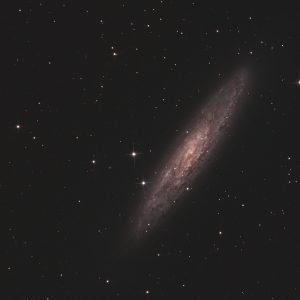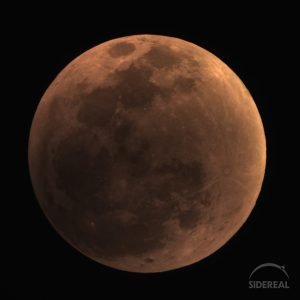Astrophotography and Macro Photography
One of the things we like about getting images is they can tell stories so well. In the case of astrophotography you can literally see the development of a solar system or the birth (or the death) of a star. Our recent sponsorship of the Australian Photographic Prize gave us the opportunity to discuss storytelling with other photographers, and it’s remarkably similar. Here at Sidereal Trading we’re mostly into astrophotography – that is, getting really (and I mean really) big objects onto a camera sensor. But occasionally we like to get really small images onto that same sensor. This is extreme-macro photography. In this case, it is Macro Photography with the WeMacro Rail.
Ready for that close-up?
To get images of those tiny subjects, you need to get your lens really close. There are a few ways of doing this.
- First, you can use a macro lens, which has a way of moving the lens further from the sensor, allowing you to focus on something very close.
- Second, you can get a reversing adapter, which is an intriguing aspect of the optics. If you turn your normal lens around on the camera you can get very close to the subject.
- Finally, you can use an adapter so you can add a microscope lens. This is the way to get some serious magnification!
The drawback in macro photography?
But if you’ve used any of these, you will have noticed that they have one big disadvantage. There’s nearly no depth of focus. For a subject that isn’t very flat, you’ll get parts of the image in focus, but lots of the image will be horrible and blurry.
Have a look at this image. It’s a bug that we used as a subject during a recent trade show. To be more exact, it’s one of the front feet of the bug at the top of this page. You can see that it’s very colourful, and the magnification is extreme – the foot is about a millimetre in width. But you can also see that the image has some parts that are in focus, but most are not. This is what we are dealing with – a shallow depth of focus.

Refocusing the lens is not the way to get our subject in focus. This will simply swap one focal plane for another, resulting in other out of focus areas.
The solution? Focus stacking!
The way to get the whole of the subject in focus is to use Macro Photography with the WeMacro Rail, and a technique called focus stacking. The WeMacro Rail is a platform that can move your camera forward and backward. Rather than changing the focus, the rail moves the camera, then triggers the shutter, then moves the camera again.
You can see the basic setup here. The WeMacro Rail is bolted to a suitable surface, and supports the camera and lens. Using the WeMacro phone app, I set the start point and end point for the series of images, as well as the step size, and start the process.

The camera takes a series of images, which you then give to a computer. The software (I use Helicon Focus 8, but others are available) looks for parts of each image that is in focus, then pieces these together like a jigsaw puzzle.
Incidentally, astrophotographers will be slightly familiar with the concept of taking large numbers of nearly-but-not-quite-identical images and using a computer to build the final image. The difference is that for astrophotography, you stack to build signal-to-noise ratio, but for macrophotography, you stack to select focus.
For the numismatists
Here’s my current favourite image. It’s an Australian Half Penny I found in my grandfather’s garage. For me, this gets back to the storytelling aspect. This coin’s career spanned 1934 to 1966, and you can see the scratches and scars it picked up. like a lot of things from that time, it saw some pretty hard days. I can only wonder what caused the damage across the “E” in Commonwealth. This image is a 9 x 5 mosaic, and each mosaic tile is generated from a stack of 11 images, so there were 495 images in total.
The detail is in the image of the coin is stunning. Because of the resolution, we can’t put the full size on the computer screen, but I’ve zoomed in on the “P” to give you an idea. Even this isn’t as high as Macro Photography with the WeMacro Rail can produce. Printed on a banner, the coin was nearly 2 metres in height.


For the entomologists

Here’s another image, the final stack of the bug foot from before. I’ve post-processed this image very slightly, darkening the background and brightening the image. I also applied a tiny bit of high pass filter to sharpen the detail slightly.
You’ll notice a few bits of grit at the end of the toe. I guess our model didn’t brush her feet on the way into the studio.
Finally, changing lenses to the 10x objective, I took a photo of the bug’s antenna. Normally I don’t like to get in this close, because there’s no visual relationship between what you see and what is in the image. However, it’s a good demonstration of how much magnification you can get with the equipment.

What you need for Macro Photography with the WeMacro Rail
To get started in Macro Photography with the WeMacro Rail, you only need the rail itself, which comes with the controller. This controller connects via Bluetooth to your phone, or you can connect via USB to a computer. The software you need is free. The Rail also comes with a power supply, as well as a cable for a phone extension battery.
You’ll also need a shutter release cable for your camera. The controller needs to be able to trigger the exposures without you touching. (If you want a longer description of shutter release cables, have a look at this blog from a little while ago.) Using the WeMacro in this basic configuration means you can set up like in the image earlier in the blog.
You might want the vertical and horizontal stand. This gives you greater control over your subject, especially if you want to photograph your subject from above. This is how I’ve taken all the images here.
And if you want to really lean in to the magnification, you can use a Raynox tube. This allows you to insert an additional lens to get more magnification. It also lets you switch to a microscope objective lens. This setup has a number of options, so you have the choice of using the Raynox lens or not, and which microscope lens you want to use. Camera bayonet patterns are different, so you will also need to specify which brand you are using.
As you can see, the WeMacro can give you stunningly high magnification, as well as excellent control over your subject. There are also lots of options, and you might benefit from some extra advice. We’re here to help!



